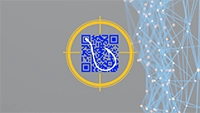Phishing is something that just doesn’t seem to want to go away.
With the first phishing email believed to have been sent in the mid 1990’s, most people did not realise the existence of phishing until the ‘Love Bug’ scam struck in 2000, when a simple email attachment infected approximately 45 million computers worldwide.
Over the years we have seen phishing move from crude messages to sophisticated spearphishing attacks and become the number one attack vector for fraudsters virtually breaking into organisations, holding them to ransom, or stealing their confidential data - and 2017 has seen some of the biggest yet. The first half of the year saw Kaspersky Labs block 51 million phishing attempts, and phishing campaigns like the Amazon attack in January make mainstream news all over the World.
Consigned to Phishing History
With the books closed on 2017 and 2018 underway, we thought we’d have a quick recap at some of the notable phishing campaigns that wreaked havoc in the last six months of 2017:
Student Finance England – September 2017
In September, students across the UK were warned of a new phishing scam, where fraudsters offered an ‘educational grant’, in attempts to prompt individuals into handing over their bank details. The targeted scam affected students across the UK, and in one case, a student was tricked out of £300.
Netflix – November 2017
In November, a new phishing email scam targeted millions of Netflix subscribers worldwide. The campaign was believed to have targeted around 110 million viewers of the popular platform, and prompted individuals to ‘update their billing information’, by following the provided link- which led to a fraudulent page impersonating the streaming site. Users were then prompted to input personal and financial information. This scam was similar to another, targeting subscribers earlier in the year.
Scarab Ransomware – November 2017
Also in November, the Scarab Ransomware campaign used the Necurs botnet to distribute millions of infected spam emails. It is believed that within the first four hours of the campaign becoming active, it was sent to 12.5 million email addresses worldwide. Once the attachment within the email was downloaded, users were served with ransomware, which locked their systems and demanded payment for access. Fortunately, this campaign was not as complex or as successful, as has been seen in other widely distributed campaigns.
Lazarus Group – December 2017
In December, it was reported that the infamous Lazarus Group - widely believed to be behind the WannaCry ransomware attack earlier in 2017, had begun a spear phishing campaign using the lure of a job opening for the CFO role at a European-based cryptocurrency company. Due to the increasing rise in the value of bitcoin, it is believed that North Korea’s interest in the cryptocurrency remains high, thus why it is likely continuing activities surrounding the cryptocurrency.
These are just a few examples of phishing campaigns seen in the latter part of 2017 and, with WannaCry devastating systems earlier in the year, the damage from these malicious messages is evident.
Almost 20 years after the first phishing campaign, the issue is still prevalent and will continue to be so for the foreseeable future making email security a high priority for phishing detection. By integrating human intelligence and machine learning, corporations can prevent, detect and respond automatically to today’s sophisticated email threats, strengthening their phishing defenses by creating a multi-layered and automated cybersecurity threat response, which could prove critical in preventing security compromise creating a cyber crisis and affecting their networks.

January 9, 2018












